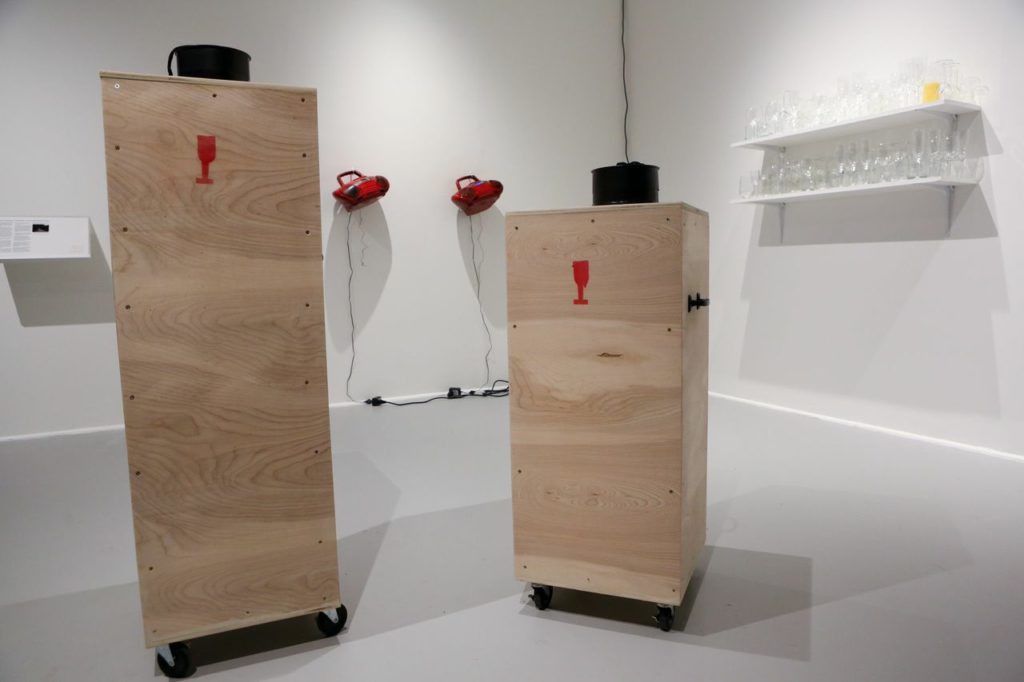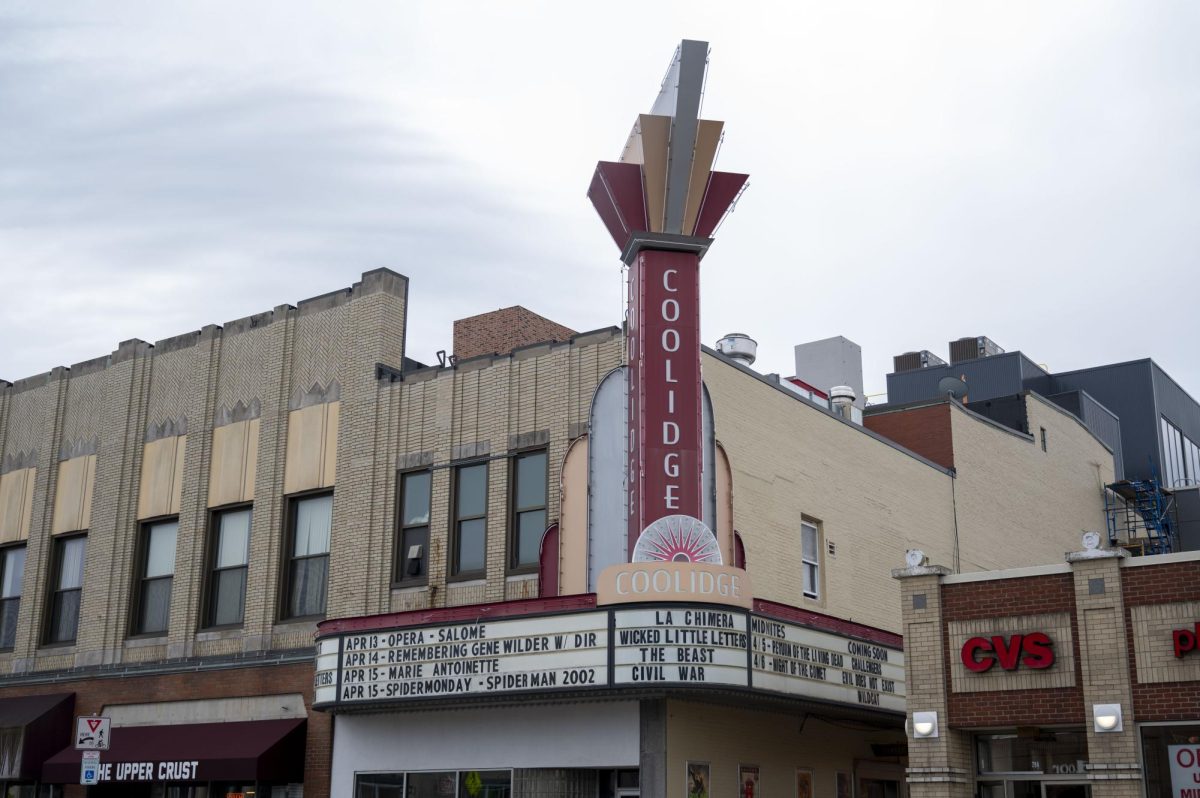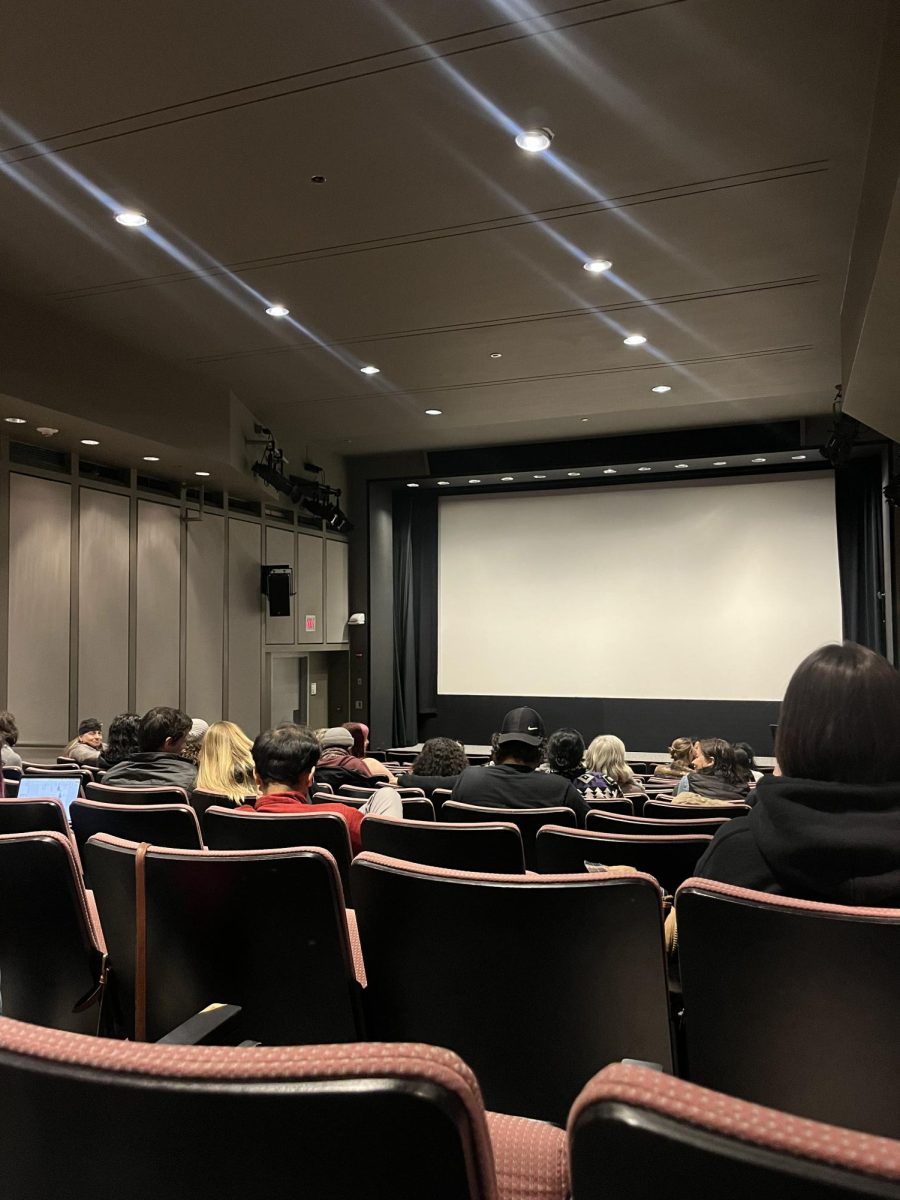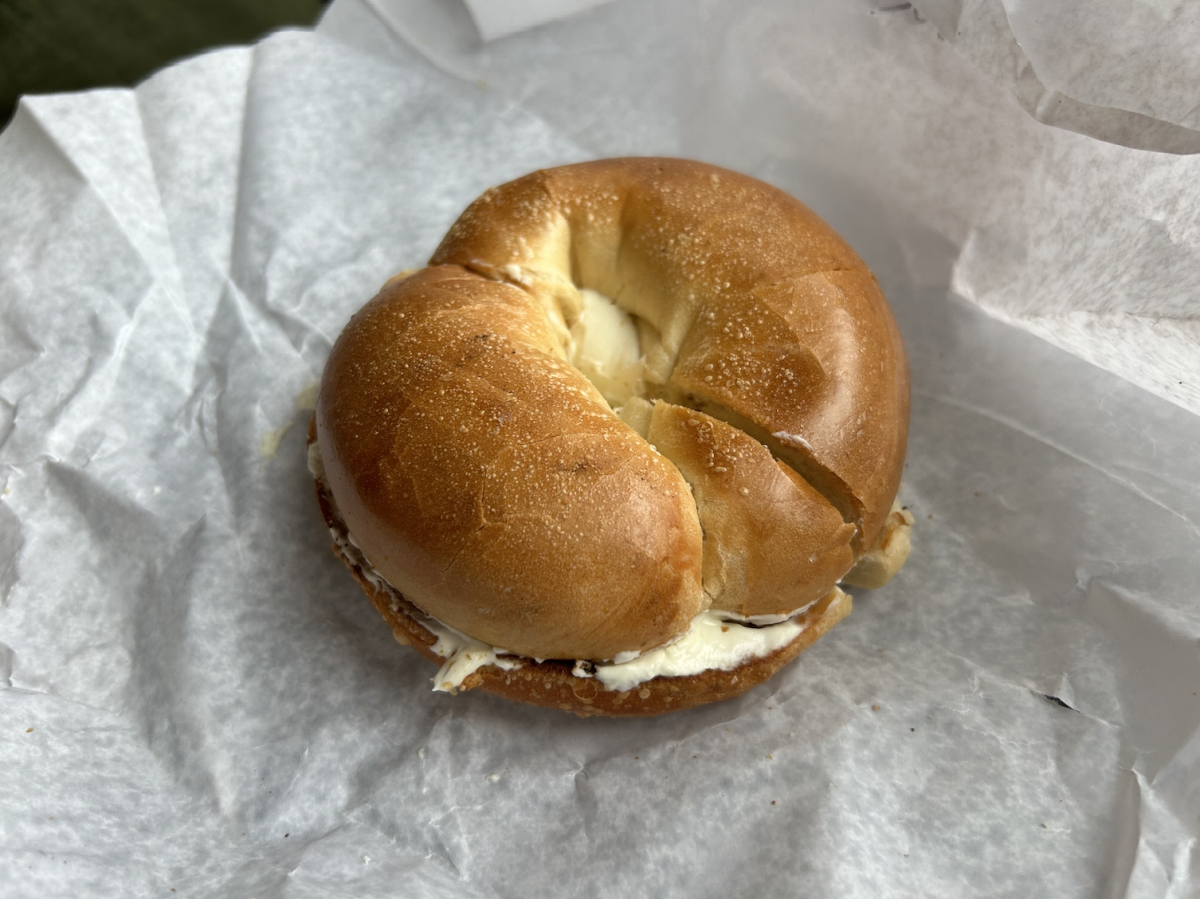By Alana Dore, deputy inside editor
To the right of the door is a long shelf lined with eclectic glassware. Mason jars are mingled with champagne flutes and wine glasses, both stemmed and stemless, are mixed with pint glasses. A young woman approaches the shelf curiously, looking around with an uncertainty which often graces our daily choices. She reaches for a martini glass with a delicate white pattern, plucks it from the shelf and then slowly approaches one of two tall boxes, lifts the lid and lets the glass slip from her fingers. It shatters on impact, as one would expect, and the crash echoes throughout the Mills Gallery.
No, this was not an act of vandalism. It’s part of the Boston Center for the Arts (BCA) new exhibit, Action Kits, which relies on the interaction of visitors to complete the experience. The glass-breaking activity is one of five individual artwork systems, each created by a separate artist. These works of art each take the form of a kit, a set of things coordinated and assembled to encourage interaction by visitors to the exhibition.
“This is a truly innovative show by a brilliant curator,” Veronique Le Melle, the President and CEO of BCA, said. “The show needs [the visitor] in order to really realize itself.”
Randi Hopkins, associate director of Visual Arts at BCA, also raved about the curator.
“[Matt Rich] came up with a really interesting idea for a show, finding artists and interesting people in our community to connect and see what kind of work we can ignite,” Hopkins said.
Rich presented the exhibit with a more modest attitude, emphasizing that the project would not exist without the artists and professionals with which it was created.
“I just had an idea, an idea about a structure. That was it. That was relatively easy,” Rich said. “The premise was to explore process across art mediums and non art mediums as well. We have all sorts of different fields recognized here, all of which have processes [and] methodologies in their own practices. This was an opportunity to explore the connections, similarities, differences, etc.”
Rich, who grew up in the South End, was inspired to create this interactive experience after co-creating and teaching the Interactive Foundation course at Northeastern University in the summer of 2008. He was teaching sculpture when he was invited to help create this new class, which was added to the expanded foundation curriculum.
“That was my introduction into the interactive realm, thinking about interactivity,” Rich said. “That was in my head, thinking about the nature of interactive structures, systems, and art… I now teach in California and I miss that [Northeastern foundations] class, I miss teaching that class, I miss talking about interactivity. I had a desire to have those conversations again and I proposed a show.”
Rich discussed his idea for a show with Hopkins, who encouraged him to develop the Action Kits exhibit which opened in the Mills Gallery on Friday, Jan. 23.
“[Rich] knows that the BCA is really connected to the community here. He started to look for people who did interesting things in the community and might be interesting to approach,” Hopkins said. “Additionally, he really needed to select artists who he thought could be responsive in a variety of ways in this kind of a project. You have to be a certain kind of artist to even be open to this.”
To create these kits, five artists were paired with five South End professionals who had community service jobs. The professionals came from a range of art and non-art fields, including academia, social service, medicine and design. Each of these professionals was asked the same five questions about their working methodologies and their personal problem-solving philosophies.
The paired artists were then provided with these answers and tasked with translating them into an interactive kit. The full interview scripts are on display alongside the kit with which they correlate.
The artists include Jamilah Sabur, John C. Gonzalez, Susan Metrican, Marcus Civin and Jamie Zigelbaum. The professionals with whom they were paired include Scott Clements of Clements Photography and Design; President and Executive Director of the Pine Street Inn Lyndia Downie; Claudia Eliaza, director of music therapy at Community Music Center of Boston; Nathan Felde, professor and chair of the Department of Art and Design at Northeastern University; and Jennifer Siegel, assistant professor for General Internal Medicine at the Boston University Medical Center.
“Because the BCA is a South End institution and has been for a long time and has a mission to serve the community by providing a number of service and venues and things like that, I thought about making sure that the five professionals came from this community and were themselves representatives of the community,” Rich said. “I wanted people that were in jobs that served others.”
The BCA is a non-profit performing and visual arts complex that supports the creation of new art by working artists, builds new audiences and provides a connection to art for the community. The BCA hosts community events, live performance art and exhibition, and supports artists by providing affordable studio, rehearsal and performance space in the South End.
“The Mills is open to all kinds of different art exhibitions,” Hopkins said. “We try to be very innovative, we try to be experimental because we’re not a commercial space and we can do that. There aren’t that many spaces in Boston that are not commercial. Being a nonprofit allows us to do things that not every gallery can do, so we try to take advantage of that.”
David Rich, Matt Rich’s father, likes his son’s work as a painter but also enjoys his work on curating Action Kits.
“This is a different age for me, this interactive [sic] is not so big with my generation, but its a good thing to do. You have to work at it a little,” he said.
Matt’s favorite part of this whole process is the way his show connects people to art and to each other.
“I had a lot of conversations with the artists over the past couple of months and we talked about really specific and weird and interesting things, like trying to create things for other people to experience and what that’s like and the collaboration that goes into that,” he said. “I was having these conversations with people and I would only have had those conversations with those people because of this show. There’s a social collaborative aspect to working on a project like this that’s different from working in a studio.”
Not only is the interactivity a compelling aspect of the exhibit, but the motivation of creating conversations in addition to art.
“I love how much of the real world is present in this show,” Matt Rich said. “Also, [I love] how much of it is geared toward the visitors. Not just as passive viewers, not just people looking at images, but people who are authors, they get to navigate these sometimes hard to figure out experiences as they will.”
Action Kits served to individualize the experience so that the conversation shifts to each person’s unique experience with the art.
“You are able to talk about the nature of your experience. What you do is present and matters,” Matt Rich said.
The BCA is hosting several free, public events to showcase the exhibit further, including a sit down with Matt Rich and some of the artists that worked on the show on Friday, March 26 at 6 p.m. The exhibit, which will continue through April 5, is located in Mills Gallery at the Boston Center for the Arts at 551 Tremont Street.
Photo courtesy Melissa Blackall Photography














